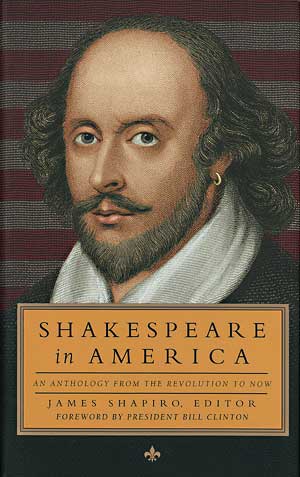
“Shakespeare belongs to two nations now,” Willa Cather declared in 1894, and the Library of America’s wonderful anthology supports her assertion in rich detail. “A distinctively American response to Shakespeare” began to emerge during the Revolution, notes editor James Shapiro; as the Bard’s plays became embedded in the fabric of national life, they served as vehicles for discussion of the nation’s thorniest cultural and political issues.
Some overwrought 18th-century poetry suggests that Americans initially thought the best way to claim Shakespeare as their own was simply to demonstrate that they loved W.S. even more than the English did. Visits to his childhood home in Stratford were de rigueur for 19th-century American tourists; their ambivalent reactions to the “small mean looking edifice” are voiced in a charming 1820 essay by Washington Irving and in a ponderously satirical 1903 story by Henry James that seems to go on forever. Shapiro is commendably willing to include lengthy selections, but not all of them deserve the space they occupy.
A scrupulous, anonymous account of the notorious 1849 Astor Place Riot, however, fully merits 42 pages. It offers the most vivid, and the bloodiest, example of Shakespeare being enlisted in American social conflicts. The press touted the rivalry of Shakespearean actors Charles Macready and Edwin Forrest as a contest between English snobbery and American populism; when some 15,000 Forrest supporters protested outside the Astor Place Opera House where Macready was playing Macbeth, the militia fired into the crowd, killing more than 20 people. The pamphlet reprinted here, while deploring mob violence, closes with a reminder that “this mob is but a symptom…of a society that has permitted thousands of its members to grow up in poverty and ignorance.”
Macbeth itself had nothing to do with the riot, but several distasteful 19th-century essays reveal how discomfiting Othello was to a nation consumed by the issue of race. “The passion of Desdemona for Othello is unnatural, solely and exclusively because of his color,” concludes staunch anti-slavery activist John Quincy Adams. Confederate sympathizer Mary Preston rationalizes her love for the play by declaring, “Othello was a white man!” It would be another 75 years before America was ready to see Othello played by a black man; an exultant New Masses review from Samuel Sillen of Paul Robeson’s 1943 performance proclaims its historic and artistic significance.
The anthology covers many such game-changing American Shakespearean performances. As Hamlet, Edwin Booth and John Barrymore stripped away the stale conventions of their respective eras to offer simpler, more natural interpretations, sensitively captured in the 1893 reminiscences of Booth’s friend William Winter and in a 1922 review of Barrymore by the great drama critic Stark Young. Orson Welles gets his due as the 1930s’ most brilliantly innovative Shakespearean director in Sidney B. Whipple’s perceptive appraisal of his Julius Caesar, a modern-dress parable of fascism versus democracy, and in producer John Houseman’s insightful recollections of the all-black “voodoo Macbeth.”
Pauline Kael’s defense of the film Falstaff, however, is more a rant against the Hollywood system than a proper evaluation of Welles’s remarkable film. Mary McCarthy’s deliberately provocative depiction of Macbeth as “a murderous Babbitt” and T.S. Eliot’s jaundiced assessment of Hamlet as “an artistic failure” are two other examples of criticism valuable more for its revelation of a cultural moment than its insights. By contrast, Jane Addams’s striking view of industrialist George Pullman as “A Modern Lear” and Jane Smiley’s superb analysis of her defense of Goneril and Regan in her novel A Thousand Acres make both strong political statements and valid artistic points.
It’s impossible to do full justice to the sweep and scope of Shapiro’s selections. Fascinating essays by Ralph Waldo Emerson, Herman Melville and Walt Whitman—in which they grapple with the question of Shakespeare’s value for writers striving to create distinctively American art—are too complex to be summarized. Most of the humorous pieces are forgettable, with the notable exceptions of Cather’s vivisection of a provincial production of Antony and Cleopatra and Cole Porter’s witty (and deliciously dirty) lyrics for “Brush Up Your Shakespeare” from Kiss Me, Kate. A sterner editorial hand might have cut a hundred pages of weaker material, but then the anthology overall would be less textured and comprehensive. Anyone interested in Shakespeare or American history will be glad to have every last word.
Wendy Smith is a regular contributor to this magazine.

